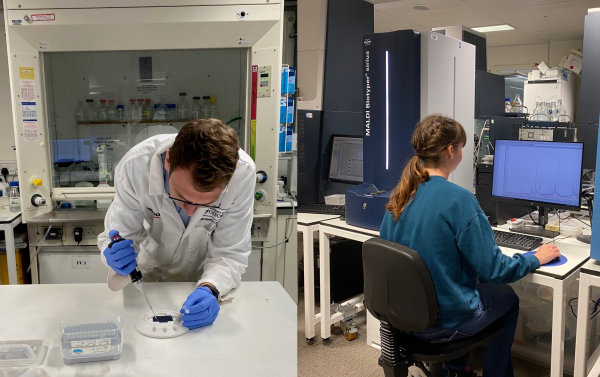Scientists develop new method to detect fake vaccines

- A team from the University of Oxford have developed a first of its kind mass spectrometry method for vaccine authenticity screening using machine learning.
- The method repurposes clinical mass spectrometers already present in hospitals worldwide, making the approach feasible for global supply chain monitoring.
- The discovery offers an effective solution to the rise in substandard and counterfeit vaccines threatening public health.
Research published today in the Nature portfolio journal npj Vaccines describes a new method capable of distinguishing authentic and falsified vaccines using machine learning analysis of mass spectral data. The method proved effective in differentiating between a range of authentic and ‘faked’ vaccines previously found to have entered supply chains.
A key benefit of the novel method is that it uses clinical mass spectrometers already distributed globally for medical diagnostics, giving it the potential to address the urgent need for more effective global vaccine supply chain screening.
The study is co-authored by Professor Paul Newton, Head of Medicine Quality Research Group), who said:
This innovative research provides compelling evidence that MALDI mass spectrometry techniques could be used in accessible systems for screening for vaccine falsification globally, especially in centres with hospital microbiology laboratories, enhancing public health and confidence in vaccines.
Professor James McCullagh, study co-leader and Professor of Biological Chemistry in the Department of Chemistry said "We are thrilled to see the method’s effectiveness and its potential for deployment into real-world vaccine authenticity screening. This is an important milestone for The Vaccine Identity Evaluation (VIE) consortium which focusses on the development and evaluation of innovative devices for detecting falsified and substandard vaccines, supported by multiple research partners including the World Health Organisation (WHO), medicine regulatory authorities and vaccine manufacturers."
"This method is the culmination of a number of years of collaborative research that has brought together scientists from multiple departments and divisions across the university with outside partners including Prof. Pavel Matousek at the Rutherford Appleton Laboratory at Harwell. Rebecca Clarke (former Part II student) and John Walsby-Tickle both played key roles in the method’s development in the Department of Chemistry."
The threat of substandard and falsified vaccines
The global population is increasingly reliant on vaccines to maintain population health with billions of doses used annually in immunisation programs worldwide. The vast majority of vaccines are of excellent quality. However, a rise in substandard and falsified vaccines threaten global public health. Besides failing to treat the disease for which they were intended, these can have serious health consequences, including death, and reduce confidence in vaccines. Unfortunately, there is currently no global infrastructure in place to monitor supply chains using screening methods developed to identify ineffective vaccines.

In this new study, researchers developed and validated a method that is able to distinguish authentic and falsified vaccines using instruments developed for identifying bacteria in hospital microbiology laboratories. The method is based on matrix-assisted laser desorption/ionisation-mass spectrometry (MALDI-MS), a technique used to identify the components of a sample by giving the constituent molecules a charge then separating them. The MALDI-MS analysis is then combined with open-source machine learning. This provides a reliable multi-component model which can differentiate authentic and falsified vaccines, and is not reliant on a single marker or chemical constituent.
A potential solution
The method successfully distinguished between a range of genuine vaccines – including for influenza (flu), hepatitis B virus, and meningococcal disease – and solutions commonly used in falsified vaccines, such as sodium chloride. The results provide a proof-of-concept method that could be scaled to address the urgent need for global vaccine supply chain screening.
Co-author Professor Nicole Zitzmann (Professor of Virology in the Department of Biochemistry) said "This latest research will bring the world community one step closer to being able to tell apart falsified, ineffective vaccines from the real thing, making us all safer. It has been a tremendous collaborative effort, with everyone having this same important goal in mind. Bevin Gangadharan, Tehmina Bharucha, Laura Gomez and Yohan Arman from the Department of Biochemistry all played key roles in co-developing the method."

